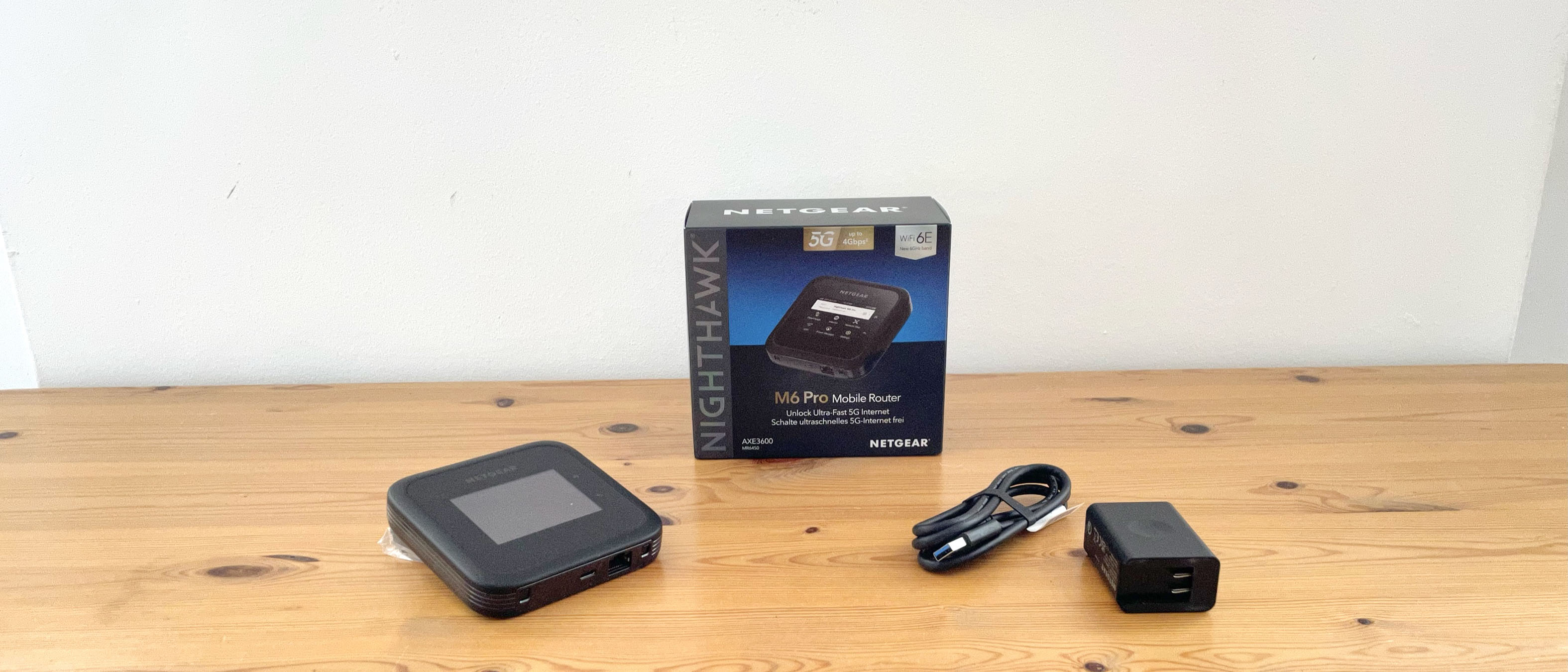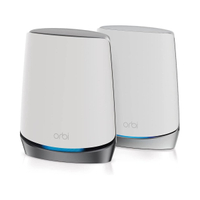TechRadar Verdict
This compact mobile router is ideal for business travelers and remote working, providing high-speed Wi-Fi 6E performance and versatile connectivity features that will be useful indoors and on the road. It’s expensive, though, and Netgear’s documentation could do more to help first-time users.
Pros
- +
unlocked for all major mobile networks
- +
Supports Wi-Fi 6E
- +
2.5 Gigabit Ethernet port
- +
13-hour battery life
Cons
- -
Very expensive
- -
Not everyone needs Wi-Fi 6E
- -
13-hour battery life
Why you can trust TechRadar
Two-minute review
Netgear’s Orbi range of mesh Wi-Fi router systems already includes a model that can use 5G mobile broadband as a fail-safe option if you ever lose your standard broadband connection. However, the company also makes several dedicated mobile routers as part of its high-performance Nighthawk brand, which can provide a quick and easy Wi-Fi network when traveling or working outdoors or just in case of a sudden broadband outage at home or in the office.
The latest addition to the Nighthawk range is the Nighthawk M6 Pro. It’s a top-of-the-range option – with a top-of-the-range price to match – but it supports both 5G mobile broadband and the latest Wi-Fi 6E technology. This allows it to create its own Wi-Fi network using the new 6.0GHz frequency band and the standard 2.4GHz and 5.0GHz bands used by Wi-Fi 5 and Wi-Fi 6 routers. It also provides high-speed wired connections too, via both Ethernet and USB-C. The built-in rechargeable battery should last for around 13 hours, so you can easily get a full day’s work from the M6 Pro when you’re traveling, and a mains adaptor is also included for indoor use.
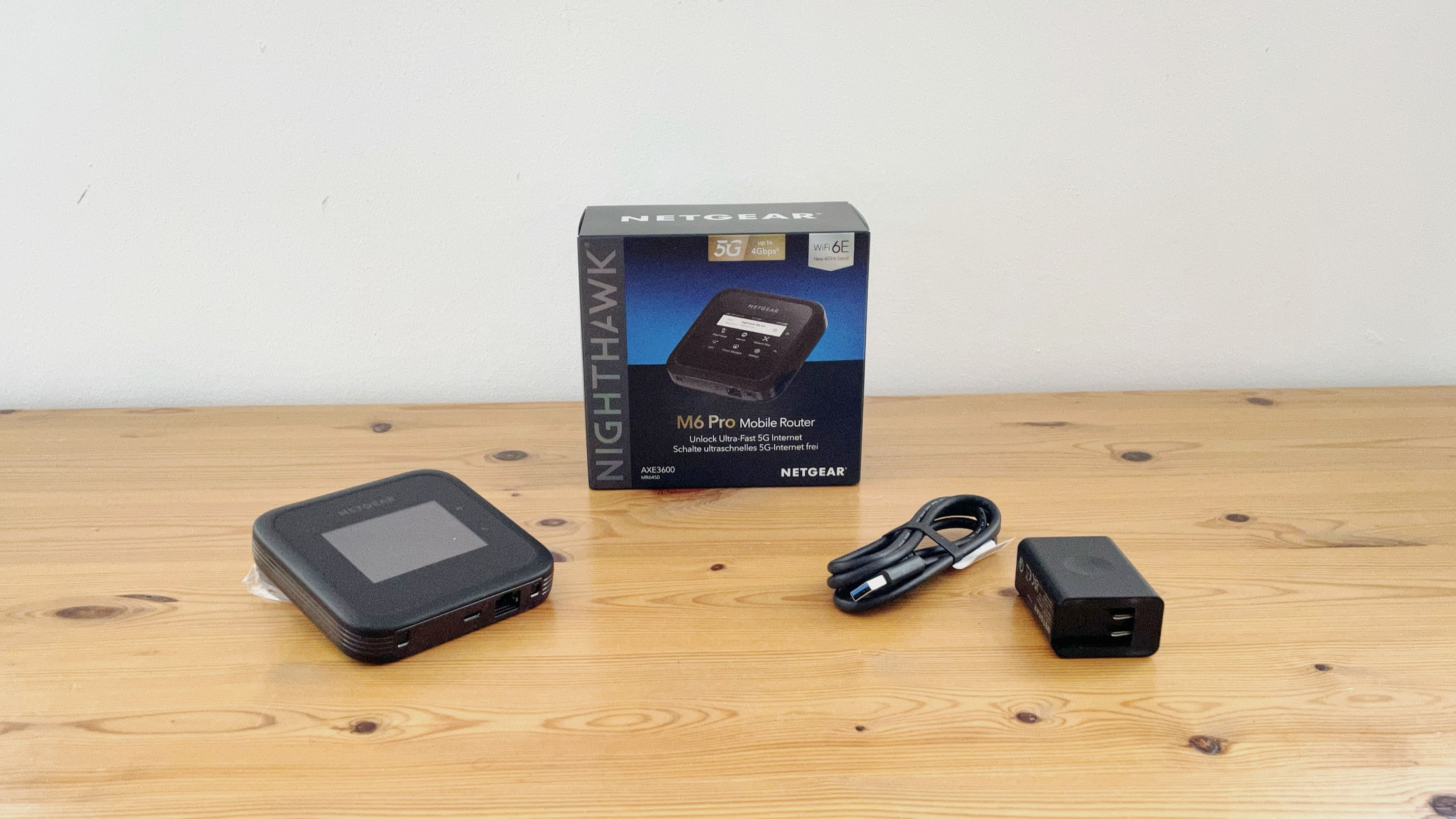
Design
The compact M6 Pro is undoubtedly well suited to life on the road. The square black casing measures just 105mm on either side and 21.5mm thick and only weighs 256g, so you can easily slip it into a bag alongside your laptop while traveling. It feels pretty sturdy, so it should be tough enough to cope with a few bumps. The back of the router can be removed to install the rechargeable battery and your 5G SIM, and the battery charges via a USB-C connector on the bottom edge of the router.
The front panel includes a 2.8-inch LCD with touch-screen controls that provide quick access to the router’s various settings, and the main Home screen can display a QR code that lets you quickly connect a smartphone or tablet to the M6 Pro’s Wi-Fi network.
5G Mobile Broadband: 8Gbps (US); 4Gbps (UK)
Wi-Fi: dual-band Wi-Fi 6E @ 3.6Gbps
Connectivity: 1x 2.5 Gigabit Ethernet, 1x USB-C
Processor: Qualcomm SDX65
Display: 2.7-inch LCD, touch-sensitive
Battery: up to 13 hours, 5040mAh Li-ion
Dimensions: 105 x 105 x 21.5mm, 0.256kg
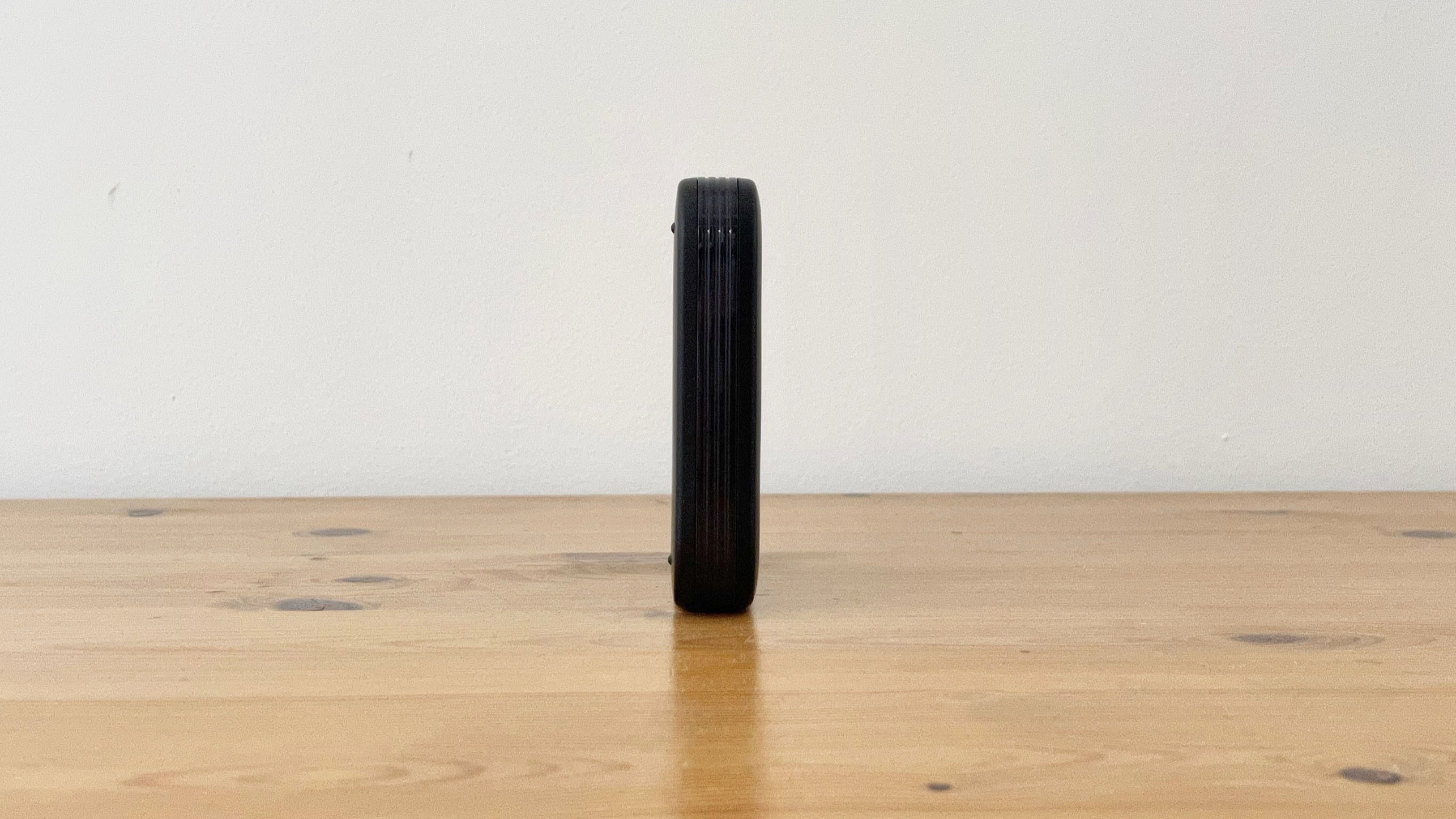
Features
There are several other mobile routers in the Nighthawk range, so the defining feature of the M6 Pro is its support for Wi-Fi 6E, which adds the new 6.0GHz frequency band to the standard 2.4GHz and 5.0GHz bands supported by older routers. But, unlike a conventional Wi-Fi 6E router, the mobile M6 Pro cannot transmit ‘tri-band’ Wi-Fi on all three rounds simultaneously.
By default, the router transmits Wi-Fi on just the 5.0GHz band to save power and provide compatibility with a wide range of computers and mobile devices. If you’re lucky enough to have a shiny new laptop or smartphone with Wi-Fi 6E, switch the router to the 6.0GHz band instead. The router also supports the older 2.4GHz band used by older computers and some smart-home devices, such as bright lights and speakers that are limited to 2.4GHz (yes, Sonos, we’re looking at you…). The M6 Pro can switch into dual-band mode here, transmitting on both 2.4GHz and 5.0GHz bands or 2.4GHz and 6.0GHz, although using dual-band Wi-Fi like this may drain the battery more quickly.
Connectivity
The M56 Pro isn’t limited to 5G connectivity and provides beneficial wired networking options. It has a 2.5 Gigabit Ethernet port allows you to connect it to high-speed broadband connections at home or in an office. Alternatively, you can use the M6 Pro more like a range extender, connecting it to your broadband router via Wi-Fi and then moving the portable M6 Pro into another room or office that might have weak Wi-Fi. In that situation, you can use the Ethernet port to provide a fast, wired network connection for a laptop or desktop PC. On the other hand, if your computer doesn’t include an Ethernet port, you can also get a wired connection by using the USB-C port on the M6 Pro. This ensures the router provides a wide range of wired and wireless networking options for indoor and outdoor use.
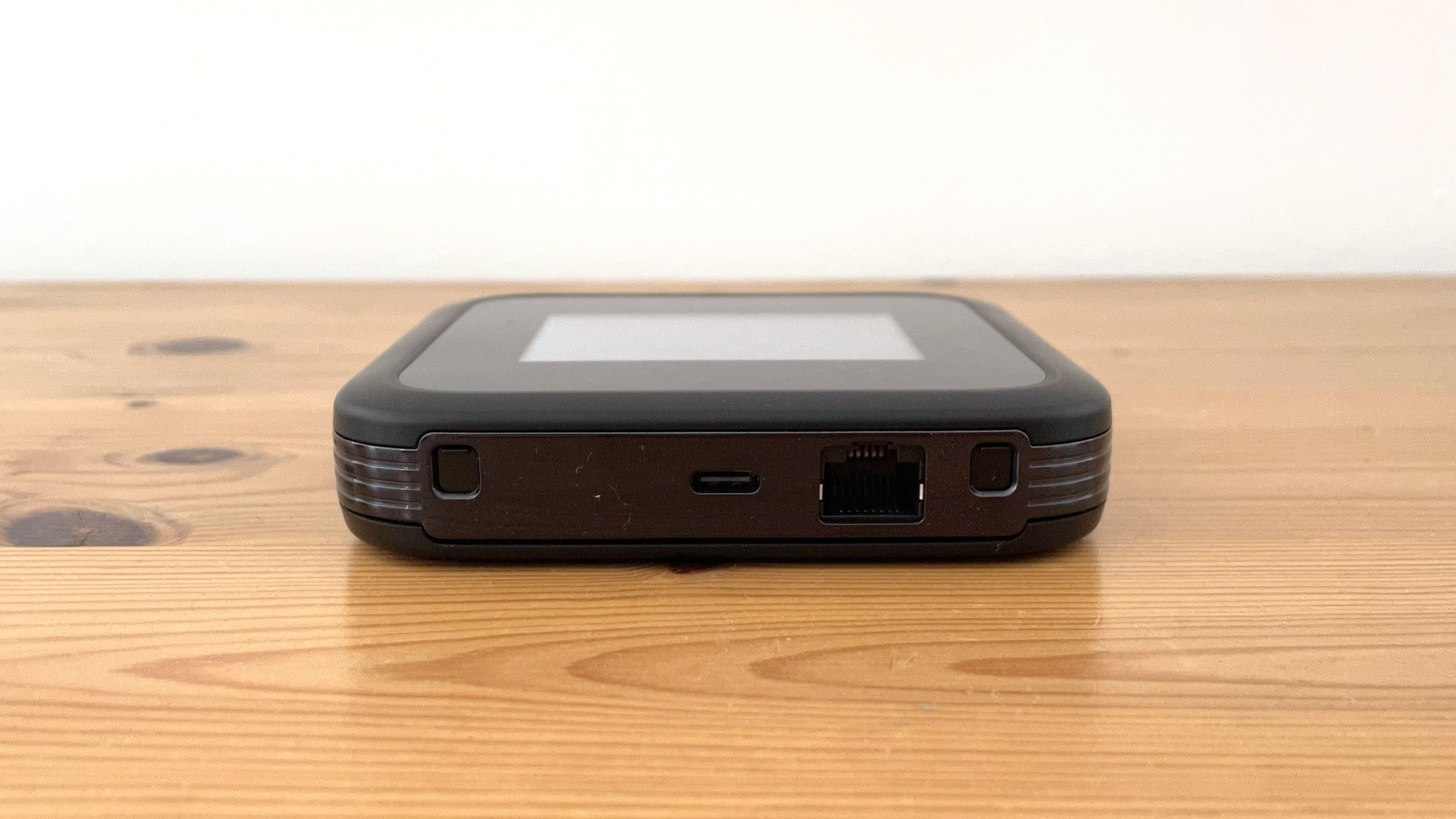
The M6 Pro also can switch between networking modes automatically. When traveling, you can set it to rely purely on 5G mobile broadband, but when you’re indoors, you can put it to use either ‘Ethernet+Cellular’ or ‘Wi-Fi+Cellular.’ This tells the router to use your standard broadband connection when available – saving you money on your mobile broadband plan – and then switch to 5G if that’s not available.
These features and settings are all straightforward to use via the router’s touch-screen controls, and we also like the fact that there’s a web browser interface with additional features available for IT managers or more experienced home users.
Our only complaint is that Netgear’s documentation isn’t beneficial for less experienced users. The Quickstart guide included with the M6 Pro assumes that you’ve installed the battery and SIM card and successfully connected the router to your 5G mobile network. However, we had problems with the EE mobile network as the router’s Settings menu told us we first needed to select an ‘APN’ – access point name – for our network. Several preset APNs were already available in the Settings menu, but none were labeled ‘EE.’ Netgear informed us that an existing APN labeled ‘everywhere’ was the correct choice for using our EE SIM, but that wasn’t made clear in the Quickstart guide. Hence, Netgear needs to make the initial set-up process more transparent for people who may not have used a mobile router before.

Performance and Battery Life
Thankfully, it worked smoothly and performed well once we connected the M6 Pro to our 5G mobile network. Oddly, the M6 Pro model sold in the UK has a top speed of 4.0Gbps when connecting to mobile broadband, while the US version steps up to 8.0Gbps. However, US and UK models transmit their Wi-Fi signal with the same maximum speed of 3.6Gbps. US customers don’t necessarily have that much of an advantage – especially given the variation in 5G speed and coverage in different locations.
The EE mobile network in the UK indicated a typical speed of 58.5Mbps for our location in a heavily built-up part of London, and we nudged slightly past that with the rate provided by the M6 Pro settling at a consistent 60Mbps as we wandered around with it during the day. That’s not quite as fast as our regular office broadband, but it’s more than adequate for web browsing, email, and even the occasional video call at work.
As mentioned, the rechargeable battery provided with the M6 Pro should last for around 13 hours when using the default 5.0GHz band. However, you can also use the touch-screen controls to adjust the router settings to provide either maximum Wi-Fi speed or longer battery life. There are preset options for balancing performance, range, and battery life, and you can also adjust other settings, such as Standby time for turning off the LCD screen or putting the M6 Pro to sleep if there are no devices currently using its Wi-Fi network.
Price and Availability
- How much does it cost? Unlocked - £899.99 / $999.99
- When is it available? Available now
- Where can you get it? US, UK, EU
With so many advanced broadband and mobile connectivity features, it’s no surprise that the M6 Pro comes with a pretty hefty price tag. An unlocked router version suitable for most mobile networks costs £899.99 in the UK or $999.99 in the US. Customers in the US may also be able to buy the router from their existing mobile provider at a lower price – although, of course, this will be locked and only suitable for use with that provider. This Wi-Fi 6E model isn’t currently available in Australia, though.
- Value: 3.5/5
Netgear Nighthawk M6 Pro: Report card
| Value | Its connectivity features are state of the art, but they’re also seriously expensive and may be overkill for many users | 3.5 / 5 |
| Design | The M6 Pro gets all the basics right, with a lightweight, compact design that is ideal for travelling or working from home. | 5 / 5 |
| Performance | The M6 Pro is a top-of-the-range mobile router, providing impressive performance for mobile broadband, wi-fi connectivity and wired networking too. | 5 / 5 |
| Overall | Netgear’s documentation could be improved, and many users will balk at the price - but the M6 Pro is one of the fastest and most versatile mobile routers that we’ve seen so far. | 4 / 5 |
Should you buy a Netgear Nighthawk M6 Pro?
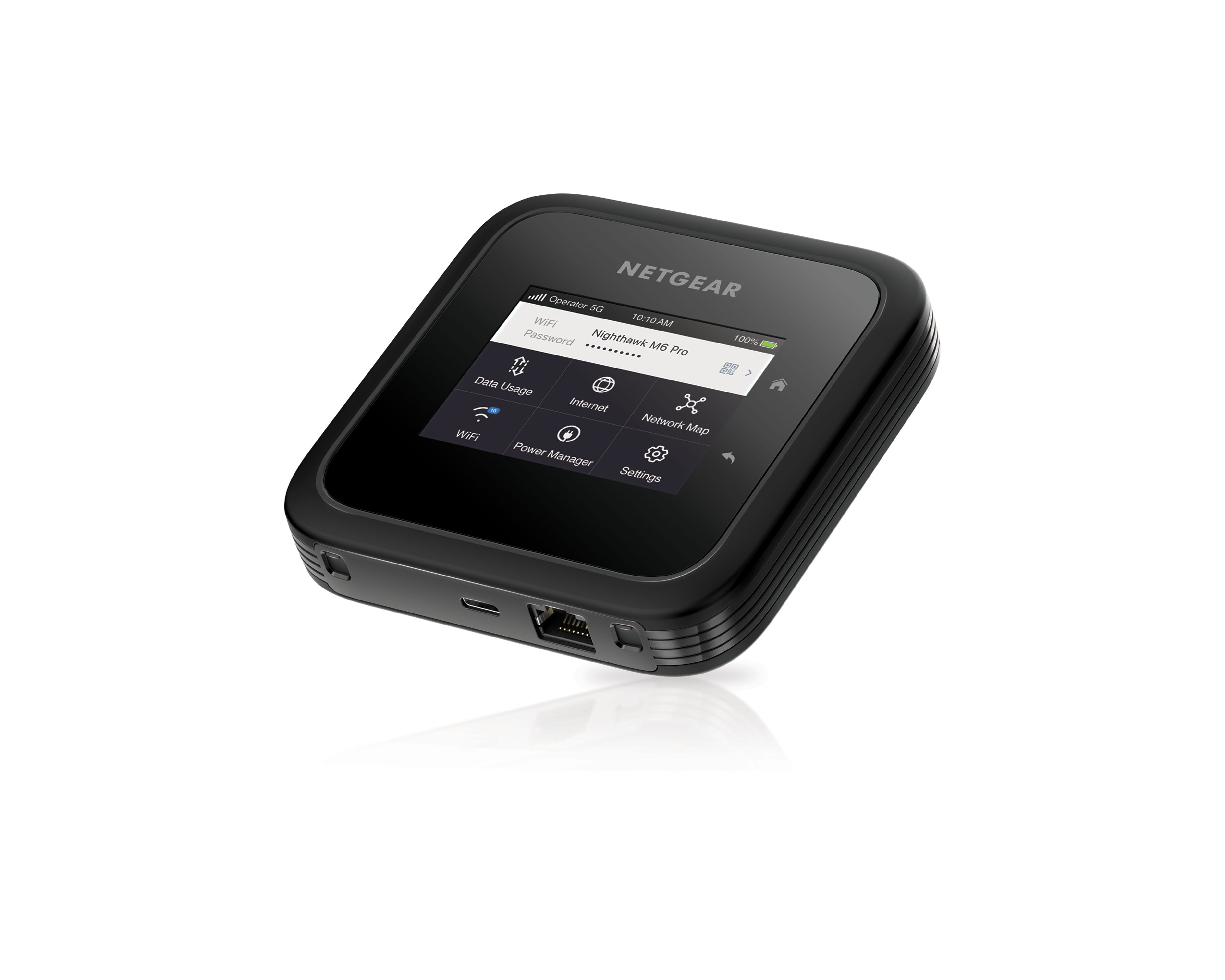
Buy it if...
You've got a CEO expense account
If you can afford to travel first-class then you can probably afford the M6 Pro too. The rest of us will have to stick to economy.
You work from home a lot
With its high-speed Ethernet and USB-C connectivity, the M6 Pro is at home on the road and in the office.
You need broadband backup
The M6 Pro can automatically switch between mobile and office/home broadband, making it a useful fail-safe if your office broadband fails for some reason.
Don't buy it if...
You’re on a budget
The M6 Pro is a top-of-the-range option for mobile broadband, and plenty of less expensive mobile routers can handle routine email and web browsing perfectly well.
You’re still using Wi-Fi 5 or 6
Although 5G mobile broadband is widespread, only the latest laptops and mobile devices currently support Wi-Fi 6E, so the M6 Pro will simply be overkill for many people.
Also consider
Netgear Orbi 5G
They’re not portable, but Netgear’s Orbi mesh Wi-Fi systems are designed to cover large homes and offices and are useful for public or outdoor venues such as hotels and conference centers. And, as the name suggests, the Orbi 5G can use 5G mobile broadband for areas that don’t have a conventional broadband connection.
Check out our Netgear Orbi 5G Wi-Fi Router review
- Looking for a business laptop to use with your new Wi-Fi router? Check out our best business laptops
Cliff Joseph is a former Editor of MacUser magazine, and a freelance technology writer with 30 year’s experience in the industry (and old enough to remember when Apple was close to going bust…).
His first job involved using Macs for magazine sub-editing and typesetting, which led to the realisation that these computer-thingies might actually turn out to be useful after all. After a few years specialising in the Mac side of the market, he went freelance and embraced the wide world of digital technology, including Windows PCs, digital audio and hi-fi, and networking. Somewhere along the line he also developed a bit of a gaming habit and has stubbornly waved the flag for Mac gaming for far too many years.
